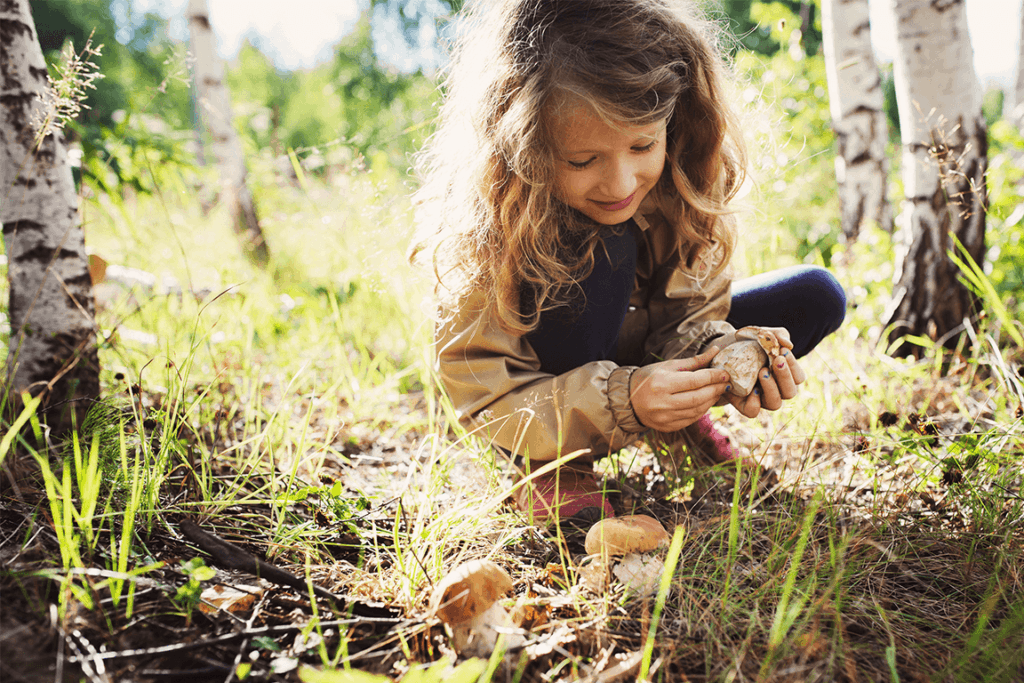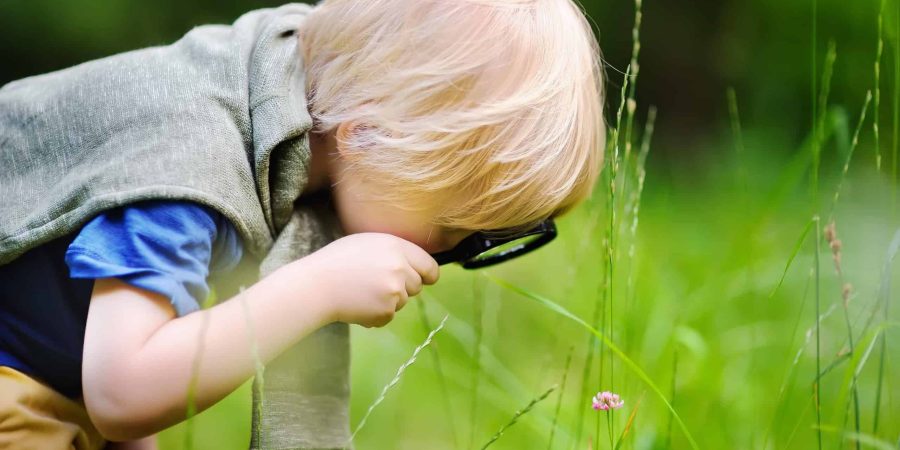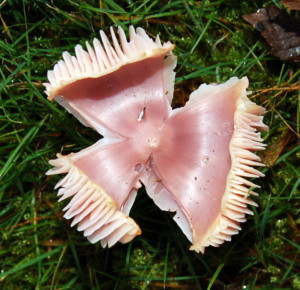In a world where children are spending more time indoors and plugged into screens, it’s important to recognise the impact that nature can have on their mental health. Research has shown that spending time in nature can reduce stress, improve mood, and increase creativity in children.
As parents and caregivers, it’s our responsibility to foster a healthy environment for our children’s mental well-being. One of the simplest and most effective ways to do this is by connecting them with nature.
In this article, I’ll explore the numerous ways in which nature can benefit kids’ mental health and provide practical tips on how to incorporate more nature into their lives. From outdoor play to nature walks and gardening, there are endless opportunities for children to reap the benefits of nature for their mental well-being.
Key Takeaways
- Access to green spaces has a strong connection to improved mental health outcomes in children.
- Children from historically marginalised communities with limited access to green spaces benefit even more from nature exposure.
- Not all exposure to the outdoors is equal; green spaces with plants and vegetation provide greater benefits than urban playgrounds without natural elements.
- Encouraging meaningful interactions with nature, such as focusing on sensory experiences and engaging in mindful activities like journaling, can enhance the benefits of being in nature for children.

How can spending time in nature benefit the wellbeing and mental health of children and adolescents?
Spending time in nature can benefit the wellbeing and mental health of children and adolescents by providing them with opportunities for physical activity, reducing stress and anxiety, improving mood and attention, and fostering a sense of connection with the natural world. Additionally, being in nature can enhance creativity, problem-solving skills, and overall cognitive development.
Exploring the mental health benefits of nature
A growing body of research supports the notion that regular exposure to nature significantly improves the mental wellbeing and overall mental health of children and adolescents. Spending time in nature has numerous mental health benefits for young people.
Access to nature provides a therapeutic environment where children can relax, release their emotions, and find peace. It promotes positive mental health outcomes, including improved attention, mood, and emotional wellbeing. Nature also offers a safe space for self-discovery and self-awareness, allowing children to explore their strengths and weaknesses.
Engaging with the outdoor environment enhances happiness and interpersonal relationships. However, it is important to note that not all exposure to the outdoors is equal. Green spaces with plants and vegetation are more beneficial for mental health compared to urban playgrounds without natural elements.
Therefore, it is crucial to advocate for equal access to nature for all children, as it can have profound benefits for their overall wellbeing.
The Green Space Factor
By providing a therapeutic environment and promoting positive mental health outcomes, spending time in green spaces can significantly benefit the wellbeing and mental health of children and adolescents.
Here are four ways in which exposure to nature can help improve their mental wellbeing:
- Reduction of stress: Green spaces provide a peaceful and calming environment, which can help children and adolescents relax and reduce stress levels.
- Improved mood: Being in nature has been shown to boost mood and increase feelings of happiness and overall wellbeing.
- Enhanced cognitive function: Spending time in green spaces can improve attention span, memory, and problem-solving skills, leading to better academic performance.
- Increased physical activity: Green spaces offer opportunities for outdoor activities, such as running, biking, and playing sports. Regular physical activity has been linked to improved mental health and emotional wellbeing.
Effects of spending time in nature on children and adolescents
Spending time in nature can have a profound impact on the mental wellbeing of children and adolescents. Not only does it provide a safe space for them to release their emotions, but it also promotes positive mental health outcomes, such as improved attention and mood. And don’t forget, nature has therapeutic benefits that have been recognised by mental health professionals.
How nature may nurture the mental wellbeing of children
The presence of nature has a profound impact on the mental wellbeing of children and adolescents. Spending time in nature can nurture their mental health in many ways. Here are four important ways that nature benefits the mental wellbeing of children:
- Nature provides a safe and calming environment where children can release their emotions and find solace. It offers a space for them to express themselves freely and connect with their inner thoughts and feelings.
- Being in nature promotes a sense of wonder and curiosity, which enhances children’s overall wellbeing. It encourages them to explore and discover new things, fostering a sense of excitement and joy.
- Nature helps children develop a deeper connection with the world around them. It teaches them to appreciate and respect the environment, leading to a stronger sense of responsibility and empathy towards nature.
- Spending time in nature improves children’s mood, reduces stress, and enhances their overall mental health outcomes. It provides a natural antidote to the pressures and demands of daily life, allowing them to relax and recharge.
The link between time spent outdoors and overall mental health
Exposure to natural environments has been consistently linked to improved overall mental health outcomes in children and adolescents, highlighting the positive effects of spending time outdoors.
Time spent in nature can have a significant impact on children’s mental health and well-being. When children engage with nature, they experience a sense of calmness, peace, and connection that can positively influence their mood and overall mental well-being.
Being in nature allows children to escape the pressures and stresses of daily life, providing a safe space for them to release their emotions and find solace.
Additionally, spending time outdoors promotes physical activity, which has been shown to benefit emotional well-being.
Nature can truly help kids’ mental health by providing a positive and nurturing environment that supports their overall well-being.
Therapeutic Benefits of Nature
Engaging with nature can have therapeutic benefits for children and adolescents, enhancing their overall well-being and promoting positive mental health outcomes. Here are four ways spending time in nature can positively impact their emotional wellbeing:
- Reduced stress: Nature provides a calming and peaceful environment that can help children and adolescents relax and unwind. The sights, sounds, and smells of nature can soothe their minds and alleviate stress.
- Improved mood: Being in nature has been shown to boost mood and increase feelings of happiness and contentment. The beauty of the natural world can uplift spirits and bring joy to their hearts.
- Enhanced cognitive function: Spending time in green spaces has been linked to improved attention, memory, and problem-solving skills. Nature provides a stimulating environment that can enhance their cognitive abilities.
- Increased physical activity: Nature engagement often involves physical activities like hiking, biking, or playing outdoor games. Regular physical activity has been associated with better mental health outcomes in children and adolescents.
Does the type of nature exposure or physical activity in green spaces make a difference in child mental health?
When it comes to the impact of nature exposure and physical activity in green spaces on child mental health, it is important to consider the different types of nature engagement.
Investigating the benefits of various physical activities in nature can help us understand the specific effects they have on children’s well-being.
Additionally, exploring the different ways children engage with nature, whether through sensory experiences, creative activities, or outdoor hobbies, can provide valuable insights into how these interactions contribute to their mental health.
Investigating the benefits of physical activity in nature
The type of physical activity in green spaces can significantly impact the mental health of children, as research suggests. Investigating the benefits of physical activity in nature is crucial in understanding how it can positively influence children’s mental well-being. Here are four key points to consider:
- Variety of activities: Engaging in a range of activities such as hiking, biking, or playing sports in nature can provide different mental health benefits. Each activity offers unique opportunities for physical exertion, exploration, and connection with the natural environment.
- Social interaction: Participating in physical activities in green spaces can foster social interaction and cooperation among children. This social engagement promotes a sense of belonging, enhances interpersonal relationships, and contributes to overall mental well-being.
- Mind-body connection: Physical activity in nature allows children to connect with their bodies and the natural world simultaneously. This connection can improve self-awareness, mindfulness, and emotional regulation, leading to better mental health outcomes.
- Nature immersion: Engaging in activities that involve a deeper connection with nature, such as gardening or nature exploration, can have profound effects on children’s mental health. These activities provide opportunities for self-discovery, creativity, and a sense of wonder, all of which contribute to positive mental well-being.
Understanding the benefits of different types of physical activity in green spaces is essential for promoting children’s mental health. By encouraging children to engage in a variety of activities, fostering social interaction, and promoting a deep connection with nature, we can support their overall well-being.
Nature is good for children’s mental health, and investigating the benefits of physical activity in nature can help us harness its potential to improve children’s lives.
Different types of nature engagement and their impact
Different types of nature engagement, including the specific nature exposure and physical activity in green spaces, can have varying impacts on the mental health of children. Access to green spaces and nature-based activities can play a significant role in improving the well-being of children.
Interacting with nature, such as spending time in parks, forests, or gardens, has been shown to have positive effects on mental health. The time spent in nature allows children to connect with the natural world, which can reduce stress, improve mood, and enhance overall emotional well-being.
Engaging in physical activities in green spaces can also provide additional benefits, such as increased physical fitness and improved cognitive function.
It is important to prioritise access to green spaces for all children, as it can have a profound impact on their mental health and overall well-being.
Do all green spaces have the same positive impact on child mental health?
When it comes to the impact of green spaces on child mental health, it’s important to consider that not all green spaces have the same positive effect. Understanding the relationship between the natural environment and child mental health is crucial in determining the specific benefits of different types of green spaces.
Additionally, the impact of physical and mental activity in nature on symptoms of ADHD should be taken into account when examining the positive impact of green spaces on child mental health.
Understanding the relationship between the natural environment and child mental health
To fully comprehend the link between the natural environment and child mental health, it is essential to explore the varying impacts of different green spaces on children’s well-being. Not all green spaces have the same positive impact on child mental health.
Here are four important factors to consider:
- Diversity of natural elements: Green spaces with a variety of plants, trees, and vegetation have a greater positive impact on children’s mental wellbeing compared to spaces without natural elements.
- Proximity to urban areas: Green spaces that are closer to urban areas may have a lesser positive impact on child mental health due to potential noise and pollution.
- Size and accessibility: Green spaces that are larger and easily accessible to children tend to have a more significant positive impact on their mental wellbeing.
- Maintenance and safety: Well-maintained green spaces that are safe for children to explore and engage with nature have a stronger positive impact on their mental health.
Understanding these factors can help us create and design green spaces that maximise the benefits for children’s mental wellbeing.
Impact of physical and mental activity in nature on ADHD symptoms
Exposure to green spaces can have varying impacts on the mental health of children, particularly in relation to the impact of physical and mental activity in nature on ADHD symptoms.
For children with ADHD, spending time in nature can be beneficial in several ways. First, it promotes stress recovery and attention restoration, which are important for managing ADHD symptoms. Additionally, being in nature reduces exposure to environmental stressors like air pollution, which can worsen ADHD symptoms.
Furthermore, engaging in physical activity in green spaces can improve mental well-being. Interactions with nature can enhance attention span, memory, and overall cognitive function in children with ADHD. Nature also provides a conducive environment for learning and problem-solving skills.
Therefore, incorporating physical and mental activity in nature can have positive effects on the symptoms and well-being of children with ADHD.
How does neighbourhood access to green space impact the mental health and wellbeing of children and adolescents?
Access to green space in the neighbourhood has a significant impact on the mental health and wellbeing of children and adolescents. Research shows that being in nature improves attention span, memory, and overall cognitive function.
Additionally, exposure to green spaces reduces stress and promotes emotional well-being. Therefore, having access to neighbourhood green spaces is crucial for supporting the mental health and wellbeing of children and adolescents.
The importance of neighbourhood green space for child mental health
Neighbourhood access to green space significantly impacts the mental health and wellbeing of children and adolescents. Here are four reasons why access to green space is important for the emotional health of children and young people in their neighbourhoods:
- Green spaces provide a calming and peaceful environment that can reduce stress and anxiety.
- Spending time in nature encourages physical activity, which is linked to improved emotional wellbeing.
- Interacting with nature stimulates the senses and promotes mindfulness, leading to increased self-awareness and improved mood.
- Access to green space has been associated with lower rates of mental health disorders such as depression and ADHD in children and adolescents.
Nature has the potential to positively influence the mental health of children and young people. Having green spaces in their neighbourhood can provide them with opportunities for emotional growth and wellbeing.
Popular questions related to the mental health of children
How has the pandemic affected the mental health of children and adolescents?
There has been a significant increase in mental health concerns among children and adolescents due to the Covid-19 pandemic. The social isolation, remote learning, and health worries have added to the strain. This highlights the need for exploring different ways to alleviate this stress, such as exposure to nature.
What does the health research say about the relationship between nature and mental health?
Health research, including many systematic reviews, have concluded a positive relationship between nature and mental health. Exposure to greenspace, or natural spaces, has been found to significantly reduce stress levels, improve mood, and enhance cognitive functioning. Hence, the health foundation strongly advocates for the power of nature in promoting physical and mental health benefits.
Can exposure to nature help kids struggling with pandemic-related stress?
Yes, exposure to nature can be a powerful tool to help kids deal with pandemic-related stress. Studies have shown that physical activity and mental health are interlinked. Encouraging kids to play outside and experience nature can improve their mood and reduce anxiety levels. This holds true for kids of all ages, from toddlers to teenagers.
How does the regular exposure to greenspace impact on mental health in children and adolescents?
Regular exposure to greenspace has been significantly associated with improved mental health in children and adolescents. A systematic review study found that children spending frequent time in natural spaces had fewer symptoms of attention deficit hyperactivity disorder (ADHD) and reported feeling more peaceful and relaxed.
Why is there a positive relationship between nature and physical health in children?
The relationship between nature and physical health in children stems from the fact that nature encourages physical activity – children are able to move, explore, and play, thus helping them to develop strength, coordination, and resilience. Additionally, exposure to nature means exposure to sunlight which provides vitamin D, necessary for bone health.
During the pandemic, how can we ensure that our children have a healthy relationship with nature?
Despite Covid-19 pandemic restrictions, it’s possible to foster a healthy relationship with nature for our children. Simple activities such as gardening, exploring local parks, or even watching nature documentaries can help. Remember, even small nature contacts can have a positive impact on mental health in children.
Can exposure to nature improve children’s concentration and school performance?
Yes, research has shown that exposure to nature can enhance cognitive functioning. This includes improvements in memory, attention, concentration, and creativity, all of which can contribute to better academic performance. Therefore, making nature a part of children’s daily lives could potentially boost their school performance.
How can parents encourage their kids to engage more with nature?
Parents can encourage their children to engage with nature by making it a regular part of their routine. This could involve daily walks, gardening projects, outdoor games, or visits to local parks. Even time spent observing and talking about nature from windows or outdoor spaces at home can increase a child’s connection with nature.
Is there a specific amount of time that children should spend in nature for health benefits?
While there’s no hard and fast rule, health research suggests that spending 120 minutes per week in nature is associated with good health and wellbeing. However, even short periods of time in nature can make a positive difference. What matters most is consistent, regular engagement with nature.
Can exposure to nature have long-term benefits on children’s physical and mental health?
Yes, the benefits of exposure to nature can certainly be long term. Regular interactions with nature have been shown to promote not just improved physical and mental health in the short term but also to influence health behaviours, attitudes, and lifestyle choices that carry into adulthood.
Conclusion
It’s clear that nature plays a crucial role in promoting the mental health and well-being of children. Whether it’s through outdoor play, nature-based activities, or simply spending time in natural environments, children can experience numerous benefits for their mental health.
Parents and caregivers should make a conscious effort to incorporate nature into their children’s daily lives. This can be as simple as taking them to a local park, going on nature walks, or even creating a small garden at home.
By encouraging children to connect with nature, we are helping them develop important coping skills, reduce stress and anxiety, improve cognitive functioning, and foster a sense of wonder and curiosity about the world around them.
Let’s prioritise the mental health of our children and give them the gift of nature. It’s time to let them reap the countless benefits that the natural world has to offer.



